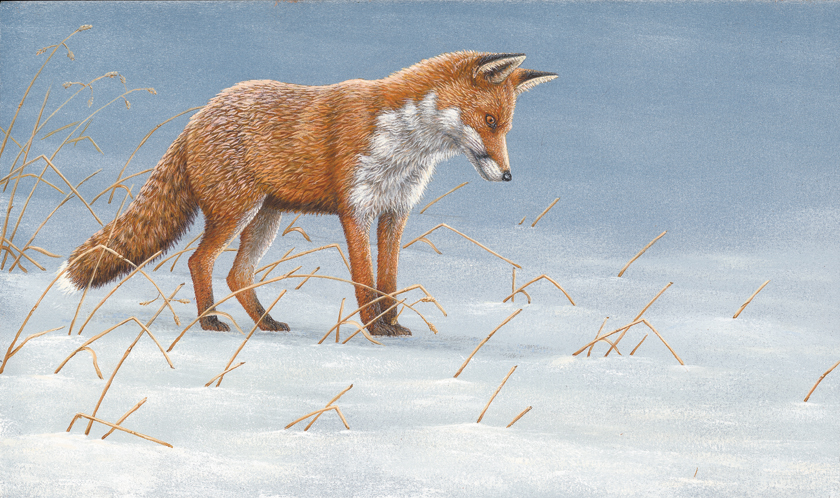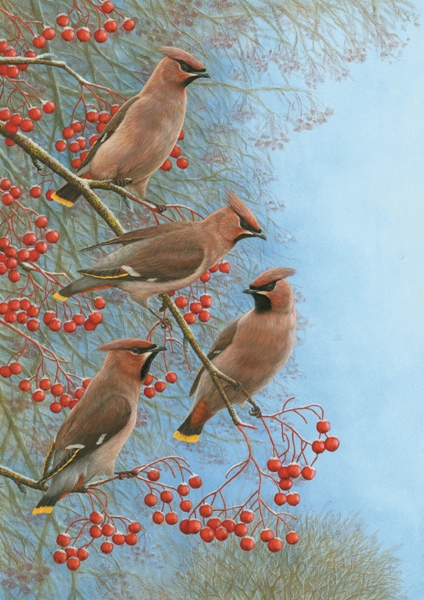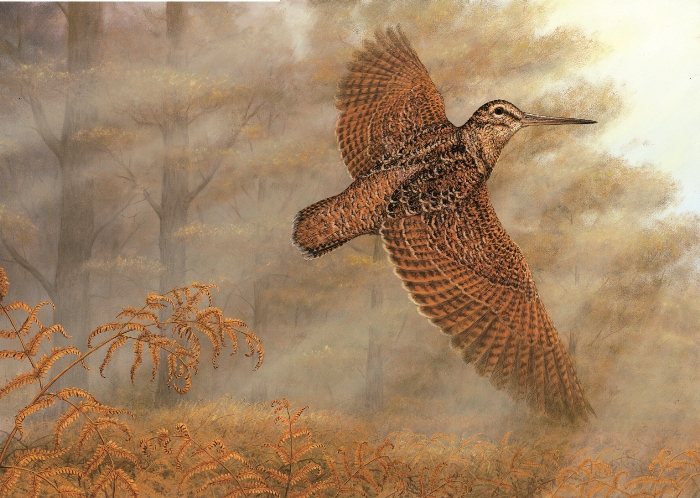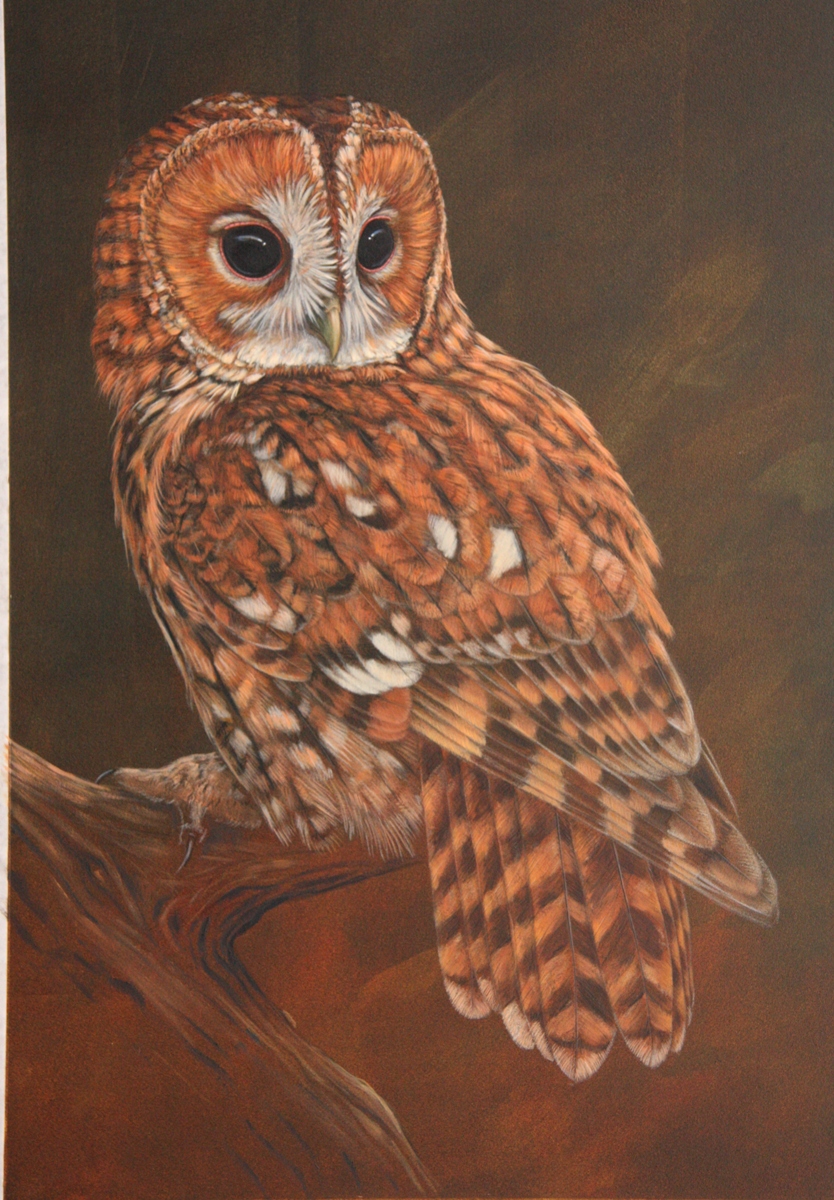AS SEEN IN





Home » Wildlife in Winter | Nine Wild Creatures to Look for in Winter
Winter is the best time to spot wildlife. Most animals are more focused on finding food and keeping warm than hiding on cold frosty days. The lighting is also beautifully soft. So whenever it snows I grab a camera and get outside to see what I can find. Here are my top nine creatures to look for when it snows.

Over the years, I’ve learned some interesting things about how animals behave in harsh conditions. One of the most fascinating was when I followed a group of more than 50 hares across a field of snow and actually saw them boxing. I knew that hares box all year round, and not just in spring, but this was the first time I had seen so many of together. To photograph them, I followed the group slowly across the snowfield, only moving when they moved as if playing a game of ‘Grandmother’s Footsteps’ My discoveries led to a whole collection of new paintings of hares in snow.

Foxes are easier to spot in winter. Their red colouring stands out against a snowy backdrop. But getting up close is still difficult because their hearing is so acute they can pick up the crunch of your footsteps from far away. In fact, their hearing is so good they can detect the rustle of a mouse or vole underneath a thick covering of snow.
The painting above was inspired by a fox I watched hunting in a deep snowdrift. I watched it creep forward slowly, listening intently with erect ears. Then, once it had pinpointed its prey’s location, it leaped into the air to surprise the rodent with a strike from above. Known as ‘mousing’, the accuracy of this leap is fascinating.

Red squirrels are a joy to watch and in winter their russet-red fur glows warmly against a white backdrop. These cheeky creatures are a rare sighting in England due to a deadly virus spread by non-native grey squirrels, but there is a small red squirrel colony in the Yorkshire Dales. I watched this charming group one snowy winter.


Short-eared owls also dive deep into snow when hunting. They can hear prey scuffling under the crust despite the height they fly at. I once spent five days trekking through heavy snowfall captivated by five short-eared owls hunting in the skies close to my gallery in Thixendale.
We get short-eared owls here in the UK but in winter our native populations swell as more birds migrate to our shores from Scandinavia in order to spend their winters in our milder climate. But even here the struggle to find food is acute. I watched as the short-eared owls were mobbed by a kestrel, also desperate to feed. The experience inspired the paintings above.

A bird I always associate with snow, and in particular, with Christmas time, is the waxwing. A flock of birds once landed just as I was sitting down to Christmas dinner with my family and ever since these birds have signified Christmas to me in. This brightly coloured bird is named for the tiny droplet of red at the tip of its wings, which looks just like a blob of red wax.
Like so many migrants to be seen at this time of year, waxwings flock to our shores to escape even harsher winters in their native Scandinavia. East Yorkshire is one of the best places to see these migrants, just as they land in large numbers after their arduous flights.
One time I saw waxwings in huge quantities in Yorkshire – take a look at the fantastic photographs I took of them.
Woodcock are essentially nocturnal and the stripes of russet and fawn on their plumage means they are perfectly camouflaged against a forest floor. This is where they spend their time foraging for worms under the leaf litter with their long beaks. Hunters, or dog walkers, often flush them out, and my painting below was inspired by the fact that this is the only way most people will have seen a woodcock.
A very cold fall of snow meant that I was able to watch a woodcock in daylight for the first time ever.

 No post about wildlife in winter would be complete without mentioning the seal colony at Donna Nook in Lincolnshire. Every year between November and January huge numbers of these lumbering sea mammals haul themselves up on to this beach to give birth. It is the only place near here that one can really study them up close and the sight of a seal pup nursing is really endearing.
No post about wildlife in winter would be complete without mentioning the seal colony at Donna Nook in Lincolnshire. Every year between November and January huge numbers of these lumbering sea mammals haul themselves up on to this beach to give birth. It is the only place near here that one can really study them up close and the sight of a seal pup nursing is really endearing.

Tawny owls make more noise than the other four species in winter. And all this extra shrieking, hooting and ‘kee-wick’- ing is down to one thing: territory. Young birds are reaching maturity and looking for new homes while older birds are fighting to hold on to their patch.
Many don’t like snow, but I love it. There is nothing that transforms the landscape so fast. Overnight you find yourself in a totally different environment and this can present so many opportunities for my photography and artwork.reatures-to-look-our-for-in-winter-observations-of-an-artist
None found
Sign up to my newsletter for updates on news, wildlife sightings, products and more directly to your inbox
AS SEEN IN





THE ROBERT FULLER GALLERY
FOTHERDALE FARM
THIXENDALE, MALTON
YO17 9LS
UNITED KINGDOM
TEL: +44 (0) 1759 368355
EMAIL: mail@robertefuller.com